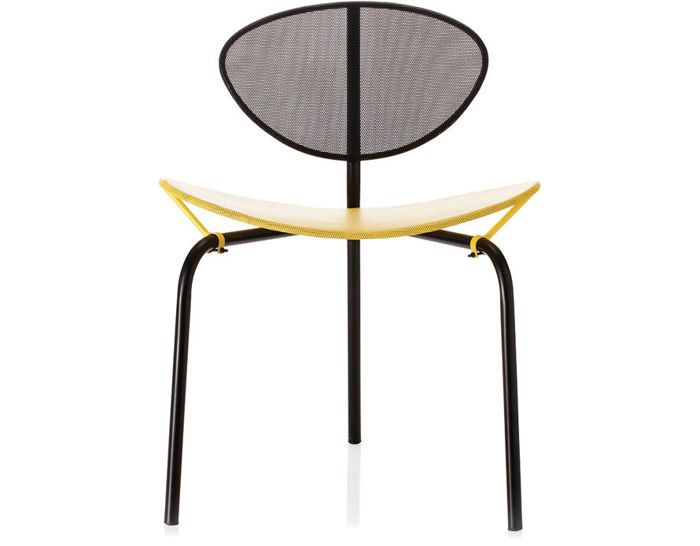nagasaki dining chair
by Mathieu Mategot from GUBI
nagasaki dining chair
Design Mathieu Mategot, 1954
Perforated sheet metal, steel
Made in Denmark by Gubi
The Nagasaki Chair was designed in 1954 and is still Mathieu Matégot's best-known piece. It was exhibited for the first time at the 1954 Salon des Artistes Décorateurs and, along with Arne Jacobsen's Ant Chair (1952), is one of only a few three-legged models. The chair is made of perforated sheet metal - Rigitulle, that characterize Matégot's work, and features unique details, such as the little stirrup that holds the seat and legs together. Both back and seat are curved and arched, similar to the form of a saddle and the overall effect is one of lightness. The highly graphic design construction is evocative of Le Corbusier's work for the Church at Ronchamp. Today, the chair is part of the permanent collection at the internationally renowned, privately owned Vitra Design Museum.
Available in your choice of colors.
29.1" h | 22.8" w | 21.2" d | seat: 17.7" h
Perforated sheet metal, steel
Made in Denmark by Gubi
The Nagasaki Chair was designed in 1954 and is still Mathieu Matégot's best-known piece. It was exhibited for the first time at the 1954 Salon des Artistes Décorateurs and, along with Arne Jacobsen's Ant Chair (1952), is one of only a few three-legged models. The chair is made of perforated sheet metal - Rigitulle, that characterize Matégot's work, and features unique details, such as the little stirrup that holds the seat and legs together. Both back and seat are curved and arched, similar to the form of a saddle and the overall effect is one of lightness. The highly graphic design construction is evocative of Le Corbusier's work for the Church at Ronchamp. Today, the chair is part of the permanent collection at the internationally renowned, privately owned Vitra Design Museum.
Available in your choice of colors.
29.1" h | 22.8" w | 21.2" d | seat: 17.7" h
(This product is currently on a production hold due to a supplier disruption. Please contact Hive with any questions.)
Mathieu Mategot
Mathieu Mategot was a versatile independent and self-taught Hungarian designer and architect who spent most of his life in Paris. The innovative material and technique Rigitulle would become a characteristic trait of his.
GUBI is dedicated to celebrating the luxury of life. Designs that combine the past and the present for the new to evolve. GUBI is pursuing perfection with passion and courage. Evolution is the essence.









 write a review now
write a review now
